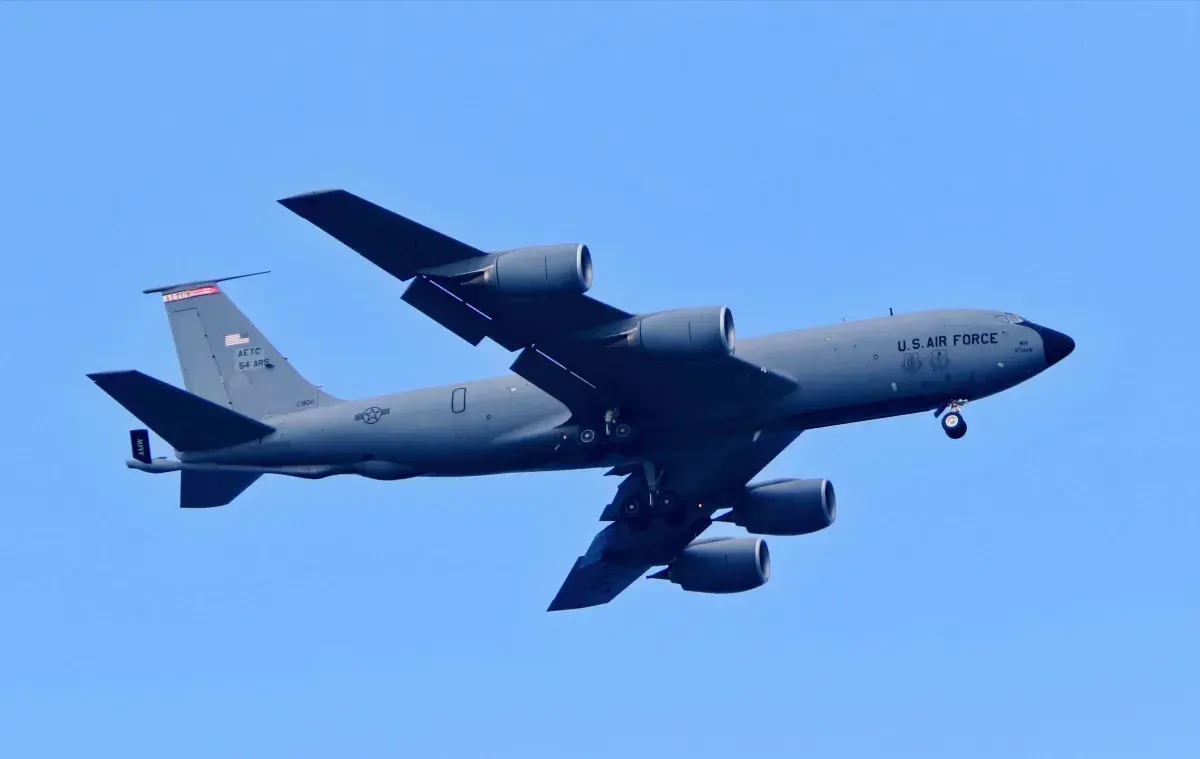
A massive wave of U.S. Air Force KC-135 Stratotankers has moved into the Middle East, marking one of the largest aerial refueling deployments in recent months. Flight tracking shows aircraft departing from Atlantic bases and converging on Al Udeid Air Base in Qatar, headquarters of U.S. Central Command.
The deployment signals a notable increase in U.S. military readiness in the region amid rising tensions with Iran, which has issued threats of retaliation against any attack.
Newsweek has reached out to the State Department and Iran’s Foreign Ministry for comment.
Why It Matters
The sudden deployment of dozens of KC-135 tankers comes amid a highly volatile regional environment. Similar large-scale military movements were observed just before the 12-day conflict involving Israel and U.S. strikes on Iran’s infrastructure and nuclear facilities.
Tensions have been further fueled by stalled nuclear negotiations with Tehran and ongoing sanctions, all of which heighten the risk of rapid confrontation. The concentration of aerial refueling capability in Qatar ensures that U.S. forces can respond quickly across the region, underscoring the strategic implications of the deployment.
What To Know
Open-source intelligence, including military tracking accounts on X, highlighted the sudden deployment. Defence_Index wrote: “Around a dozen U.S. Air Force KC-135 Stratotankers and other refuelers that moved to Europe in the past 48 hours are now heading to the Middle East.” The post added that the last comparable mobilization coincided with U.S. action against Iran’s nuclear facilities.
Tankers Flood Into Al Udeid
While the exact total remains uncertain, flight tracking data confirmed a surge of KC-135R/T aircraft landing at Al Udeid. As the largest U.S. base in the region, its reinforcement represents a significant buildup of operational capacity.
The KC-135 has anchored America’s aerial refueling mission since the late 1950s, enabling long-range power projection across the globe. Its ability to keep fighters and bombers airborne has made it indispensable for both deterrence and combat operations.
Iran Signals Deterrence
Iran emphasized that it is prepared to defend itself, while making clear it would not start a war. Mohammad Jafar Asadi, deputy for inspections, said Tehran would extend the range of its missiles “to wherever necessary” and stressed the country would respond decisively if attacked, dismissing U.S. and European calls to limit the missile program.
On Sunday, Major General Mohsen Rezaei, former commander of Iran’s Revolutionary Guard (IRGC), warned that even a single Israeli strike could trigger a full-scale war involving the U.S., saying, “The moment Israel starts a war, we will also enter a war with the United States,” highlighting Tehran’s readiness to retaliate against both Israel and its allies.
Study of War Warning Over Ceasefire
The warnings and the U.S. military buildup come as the Institute for the Study of War (ISW) cautioned that Iran’s ceasefire with Israel is unlikely to hold and that conflict could resume. The report noted that Iran’s Supreme National Security Council has directed officials to designate successors to maintain leadership continuity during a potential war. ISW added that Major General Abdol Rahim Mousavi recently inspected military units and said Iran’s naval forces are fully prepared for a possible future conflict.
What People Are Saying
Former chief commander of the IRGC Major General Mohsen Rezaei: “Negotiations aimed at giving Israel time or strengthen it [sic] are unacceptable. If that happens, the moment Israel starts a war, we will also enter a war with the United States.”
Israeli Prime Minister Benjamin Netanyahu: “We have to keep up the diplomatic and economic pressure on Iran to make it clear that we will not tolerate a resumption of their efforts to build nuclear bombs to destroy my country and yours [the United States].”
What Happens Next
The U.S. tanker deployment and Iran’s warnings signal a period of heightened vigilance across the Middle East. Attention will focus on additional movements of American aircraft or other military assets, while Tehran’s statements indicate it is prepared to respond swiftly to any perceived threats. With stalled nuclear negotiations, ongoing sanctions, and regional tensions—including the potential for renewed clashes with Israel—the situation could escalate quickly, making diplomatic engagement and careful monitoring critical in the coming weeks.



